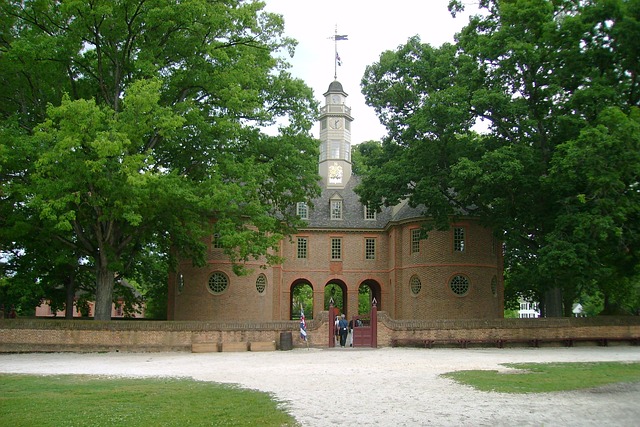
History informs the future. While America continues to grow and change, our history remains the same. Our meaningful past should be preserved. Through National Parks and historical sites, we have the opportunity to enjoy the beauties of our past. Some groups prioritize building and adding new technologies to the country, but we must also strive to keep our traditions alive. If you’re looking to expand your worldview, then visiting museums, parks, and classic towns will open your eyes to a whole world that existed before we did. You can learn so much from these destinations. America, though a young country, has an enormous amount of diversity. People in Virginia have a story to tell that is vastly different from the cowboys in Montana. Our various backgrounds makes America the great country we know and love. We maintain this integrity and pride by hanging on to our history.
Famous Locations in America
You may not even know it, but there could be a historical site right in your backyard. From monuments, to natural wonders, to old homes of famous Presidents, there are many attractions to see throughout the United States that appeal to all types of people. An architecture aficionado can enjoy visiting manmade sites like the Golden Gate Bridge or the Hoover Dam. If you’re a nature buff, check out Yosemite or the Rocky Mountains. Maybe you’re more into historical events–look into a trip to Colonial Williamsburg, which still operates like an 18th-century town. Between checking out modern attractions to explore in Vicksburg, MS or a big city like New York, NY, explore your history as well.
Traveling to locations personalizes the stories you read in 7th grade American history. For this reason, bringing kids and young people to these sites is incredibly important. Creating a unique experience seeing Abraham Lincoln’s childhood home or actually standing on the battlefields at Gettysburg can impact a child’s learning. It can impact adult understanding as well.
Keeping Historical Buildings Safe
We wouldn’t have the opportunity to explore these little pieces of history if there wasn’t an avenue for preservation. In 1966, the National Historic Preservation Act was passed, which gave the National Parks Service the power to identify and preserve landmarks that the public and private sectors deemed historic. Before this act, to preserve something like the Fenway Park you would’ve needed help from a law firm in Boston, MA. But now there is an organization that looks out for historical sites specifically.
Historic preservation requires skill and careful practice. Some historic buildings are older and in danger of breaking down. Before the introduction of steel in buildings, most were made out of wood and mud. Those materials are not a good combination if you intend your building to last for generations.
Experts are finding more and more ways to uphold the beauty and grace of older homes while securing them for the future. At times this includes recreations or exact replicas. There are several categories of historical landmark, each of which requires different actions. A site can be preserved, rehabilitated, restored, or reconstructed. Preservation requires the building to be mainly left alone and only includes minor changes to maintain its integrity. Rehabilitation gives the building a new life while maintaining its old glory. Restoration brings the building back to its original look and purpose. Lastly, reconstruction builds a new structure that is a replica of the old one.
Rehabilitated spaces may require some modern advances. A famous house may be transformed into a museum, or someone may decide to move into a home on the National Register of Historic Places. Therefore, you need all the 21st-century perks within the building. Indoor plumbing and a CPAP cleaner may be a few items to start with. While history is wonderful to experience, there are some new inventions that we will be happy to employ.
Why We Need Historical Preservation
Our country is obsessed with growth and prosperity. Those are the same principles that were used to found this country. However, sometimes growth comes at a cost. The reasons for historic preservation are far-reaching and important.
First of all, by giving old property a second life, you save money and manpower. Second, the longer you keep a historical landmark preserved, the better for the economy. Think of the tourism benefits. Virginia, Washington D.C., and Connecticut are just a few examples of the states (and a district) that prosper from showcasing their Revolutionary War locations. While, no one can deny that adding more modern store or another Amazon headquarters in a to-be-decided location are useful to the country, we need to find a compromise where growth can prosper, but not at the expense of beautiful locations.
Planning Your Historical Road Trip
Now that you understand the importance of our landmarks, you can begin to plan your trip to see them all! There are thousands of sights to see, so you might want to strategize. You can plan fabulous road trips to see some of America’s tremendous national parks. The history of the Revolutionary and Civil Wars can be seen all throughout the eastern part of the country. If you think our country’s landmarks are only stuffy old houses and plains that stretch on for miles, think again. There are plenty of theme parks around the country that have been granted historical landmark status. Make it your own and find creative ways to enjoy the wonderful story of our country.

Follow itravelnet.com